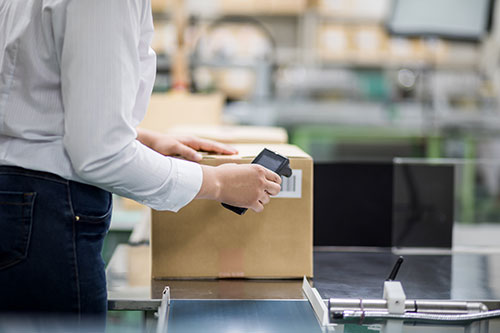Automatic identification and data capture (AIDC) technology is widely used today. For example, one application is in streamlining manufacturing and warehouse operations. But, how is AIDC used in manufacturing?
AIDC identifies and tracks a wide range of objects through computer systems. First, the system identifies an object by its digital signal. Then, a database collects key data.
This information may included supplier data, inventory counts, or machine performance. As a result, users can access and track the various stages of the production process.
In the past, each manufacturing step involved manual data input. This was a repetitive and draining process for workers. In contrast, today’s AIDC technologies have automated this entire process.
This is possible through data capture technologies including software and hardware solutions. AIDC monitors complex supply chains, quality control, and inventory tracking. Thus, it reduces the labor of humans.
For the consumer, AIDC’s efficiency creates inexpensive, high quality goods. For workers, it’s freed them up to pursue more productive and meaningful tasks. As such, it’s proved itself foundational to the digital economy.
How IoT Will Change AIDC
AIDC’s future looks even more promising when combined with the IIoT. The Industrial Internet of Things can further streamline the manufacturing process.
For example, it connects all systems so that users have immediate access to real-time data. As a result, this data keeps workers informed of necessary performance improvements. Also, companies can make informed decisions based on data provided by AIDC systems.
Types of Data Capture Technologies
Some common automated data collection technologies include:
-
Barcodes:
Barcodes are the most common manner of tracking objects. A bar code is read-only and requires scanning with a barcode reader.
-
Radio Frequency Identification (RFID):
RFID allows objects to be automatically identified and tracked. RFID tags can track objects at every stage of the production process.
-
Voice Recognition:
This technology can recognize and understand speech. Voice recognition streamlines the manufacturing process through voice search and data entry.
-
Magnetic Stripes:
These devices contain magnetic strips that hold personal information. When used in ID smart cards, this technology improves security systems for warehouses.
-
Optical Character Recognition (OCR):
OCR technology reads and digitizes text from scanned documents and images. In other words, it has automated the process of data entry, making it machine readable.
Contact Us for a Personalized Consultation
At Radley, we’ve been on the frontier of these exciting developments for over 40 years. We pride ourselves on offering the most flexible solutions for your unique workflows. From EDI software to scalable MES and WMS solutions, Radley allows you to get the most out of your data. Contact us today for a free consultation. Or see our article MES Software: Everything You Need to Know.

